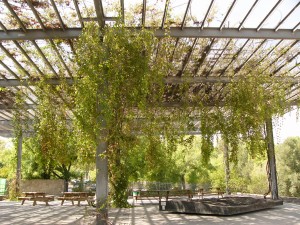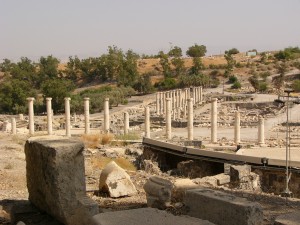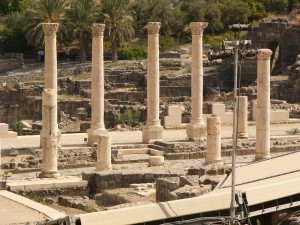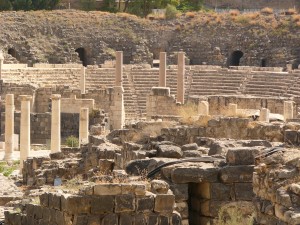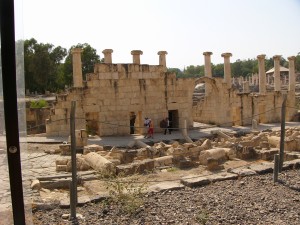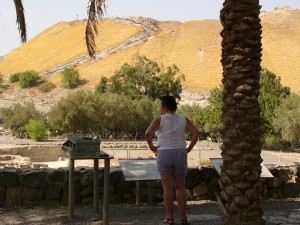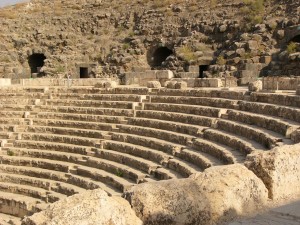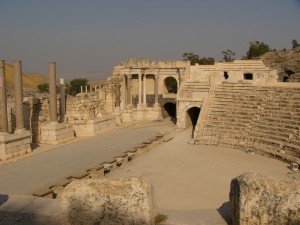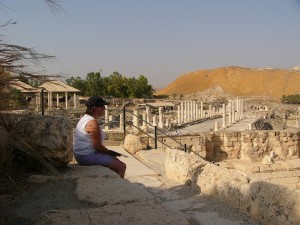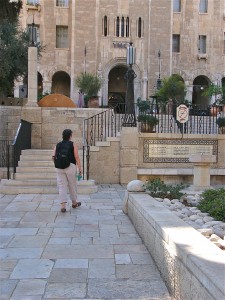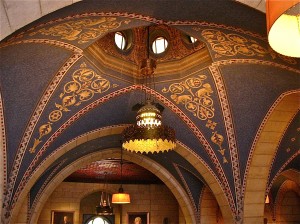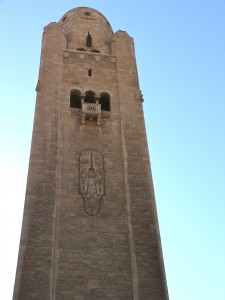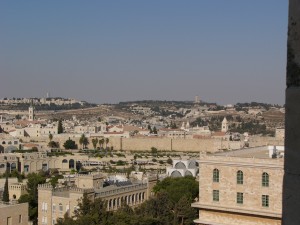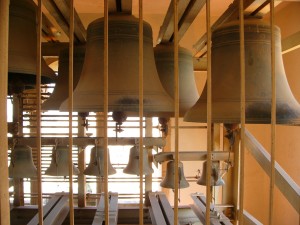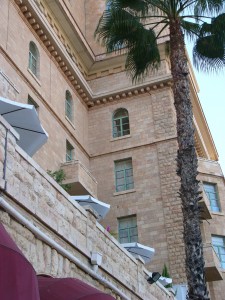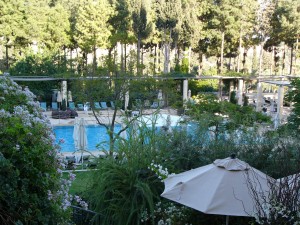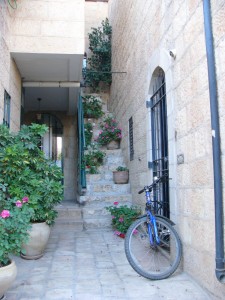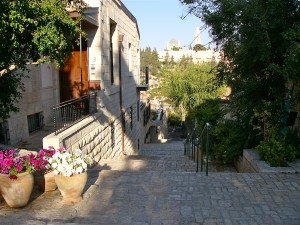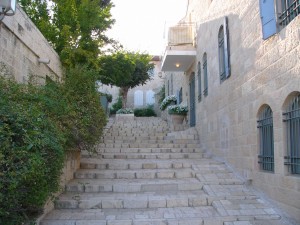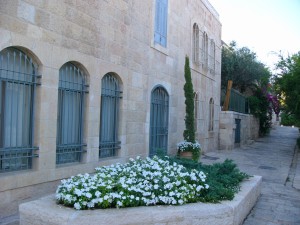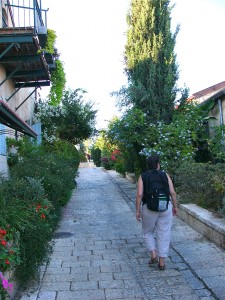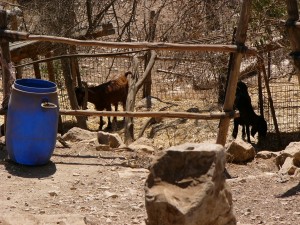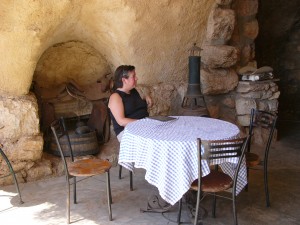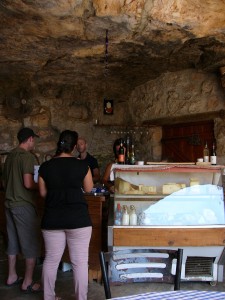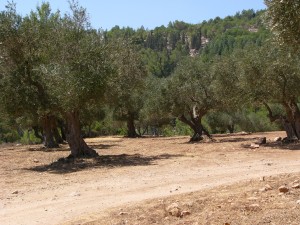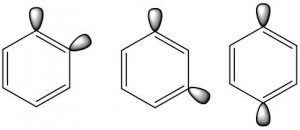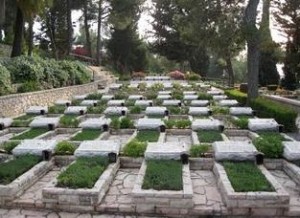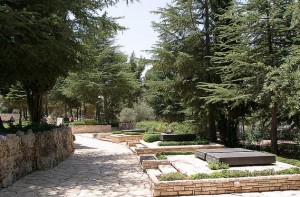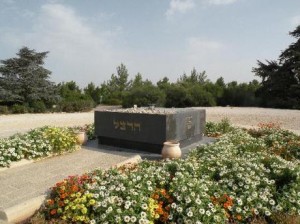Friday, Sept 28th. Today we visited the Roman/Byzantine Ruins at the Bet Sha’an National Park, just outside the city of Bet Sha’an, which is about 200 km north of Jerusalem at the northern tip of the West Bank. I was a two-hour drive through the desert.
Bet Sha’an is another busy, relatively modern city. The ruins at the national park were amazing. It was a very, very hot day – over 40 (that’s degrees Celsius); i.e., over 100 F, so we rented a golf cart to more easily see everything.
The park is over 400 acres of an archeologists’ dream. At the center is a Tell (a mound of earth several hundred meters high, which contains within the remnant of ancient cities yet to be unearthed) that they estimate contains evidence of civilizations from the late Neolithic period, i.e. as early as 6000-5000 BCE). Archeological evidence indicates that the Tell was occupied continuously until the late Early Bronze Age and then resumed in the early Bronze Age III. The Tell was there when the Romans occupied the area in ~ 500 BCE and they put their temple on the top of the hill and designed their city around it. The city and the temple on top of the Tell were excavated initially in the 1920s by archeologists from Penn State and then a new dig began in the 80s by archeologists from Hebrew University. It is an active dig today. Mount Gilboa is not too far from here and was the site of a great battle between the Philistines and Israelites (under King Saul). The Israelites lost and King Saul was killed. His body was displayed on Bet Sha’an walls. King David eventually took the location. Each new reign destroyed the old city and built a new one on top of the ruins. We went through the park and took some terrific photos, a few of which are given below.
Despite the heat we thoroughly enjoyed this place. It is amazing to ponder the way people lived here over the millennia.

